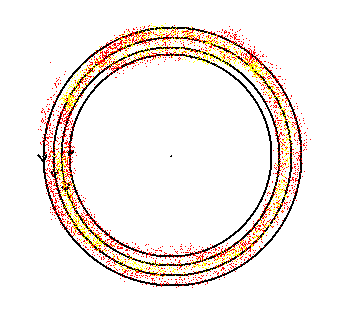
There are two kinds of ways that nuclear energy has been used: fission and fusion.

The most important reactions are
These reactions are used for bombs.
The first reaction is most commonly used for commercial power generation.
An example is 2H + 3H --> 4He + n.
This releases 18 MeV of energy.
Recall that the hydrogen nuclei will repel each other because of their electric charge. Thus the hydrogen must be very hot in order for them to get near enough to each other for the strong interactions to be effective and make the reaction occur. This and similar reactions are used to make hydrogen bombs. The hydrogen is heated with a fission bomb.
There is a big effort underway to make this work for commercial power generation. The difficult trick is to get the hydrogen hot and dense enough. The main approach being tried is to make a plasma that is hotter than the middle of the Sun, although not as dense. The plasma is to be confined a strong magnetic field.

It was known that deuterium could undergo the fusion reactions
The chemists held the deuterium is palladium rods, making use of the fact that palladium likes to absorb hydrogen.

They reported that more energy was produced in their apparatus than was used to force the deuterium into the rod. They attributed the excess energy to nuclear fusion.
If this were true it would imply
By 2007, this "news" has pretty much died down, but it was still continuing in 1996. For instance, there was a news story on Eugene television in 1996 about the ``Patterson cell'' for energy production. Here is a (rather cynical) report on it from an electronic newsletter, WHAT'S NEW by Robert L. Park, Friday, 9 Feb 96, Washington, DC:
3. ALTERNATIVE ENERGY: READY FOR A REMAKE OF PONS & FLEISCHMANN? An ABC News story this week followed a familiar script: credulous reporter interviews smiling man in white smock, who explains that when he coats tiny beads with copper, nickel and palladium, puts them in salt water, and then runs a current through the mess, he gets 100 times more energy out than he puts in. Reporter touches cell and exclaims, "It's warm!" How does it work? Inventor says he has no idea. Reporter puts on his serious face and looks into the camera: "There have been dozens of claims of ideal energy sources, but this device is different. It has attracted serious interest from major companies and been verified by scientists at prestigious universities." Now insert a seven-second sound bite from a skeptic for "balance," and then one final shot of the inventor, James Patterson, writing science stuff on a blackboard.
Updated 10 October 2007
Davison E. Soper, Institute of Theoretical Science, University of Oregon, Eugene OR 97403 USA